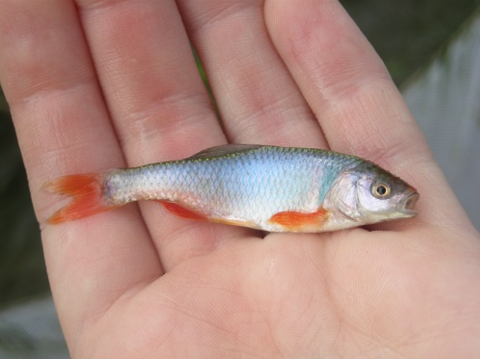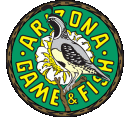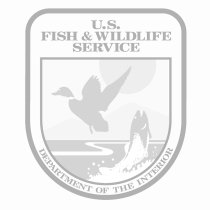Location
States
Arizona, UtahEcosystem
River/streamIntroduction
The Virgin River, a tributary of the Colorado River, flows from southwestern Utah through Arizona and empties into Lake Mead, Nevada. Native fishes, including the endangered Virgin River Chub (Gila seminuda) and Woundfin (Plagopterus argentissimus) are found nowhere else on earth and have been extirpated from stretches of the Virgin River that contain non-native Red Shiner (Cyprinella lutrensis). Introduced to Lake Mead as baitfish, Red Shiner are extremely prolific and predatory toward native fish eggs and larvae. As Red Shiner colonized Virgin River habitat upstream of Lake Mead in the mid-1980s, they displaced native fish populations. Red Shiner have detrimental impacts to native Virgin River fish communities and biodiversity, and Woundfin recovery in the Virgin River is not possible in reaches where Red Shiner are established.
In 2002, local, state, and federal partners collaborated to form the Virgin River Resource Management and Recovery Program (VRP). The VRP addresses threats to native fish species, therefore Red Shiner eradication became one of their primary goals. To facilitate eradication efforts, VRP partners constructed three fish barriers on the mainstem Virgin River: the Web Hill Barrier (WHB) in St. George; Stateline Barrier (SB) 2.2 miles above the Utah-Arizona state line; and the Virgin Gorge Barrier (VGB) 16.9 miles downstream of SB (click here for a map of barrier locations). The VGB also transitions to a velocity barrier during high streamflow events to prevent upstream fish movement during flooding. Partners also constructed numerous concrete drop structure structure
Something temporarily or permanently constructed, built, or placed; and constructed of natural or manufactured parts including, but not limited to, a building, shed, cabin, porch, bridge, walkway, stair steps, sign, landing, platform, dock, rack, fence, telecommunication device, antennae, fish cleaning table, satellite dish/mount, or well head.
Learn more about structure barriers in off-channel areas that prevent Red Shiner movement upstream. After barrier construction, VRP partnered with Utah Division of Wildlife Resources (UDWR) and others and conducted rotenone (a broad-spectrum piscicide) treatments and mechanical removal efforts to eradicate Red Shiner.
Key Issues Addressed
Competition, predation, and high reproduction rates of Red Shiner can overwhelm native species, and the decline of Virgin River Chub and Woundfin are attributed to Red Shiner colonization. Red Shiner compete for similar food resources, reducing these resources for natives. Red Shiner also predate upon eggs and juvenile native fishes, further reducing native fish populations. They are extremely prolific and reproduce multiple times between early summer and fall, and their offspring grow rapidly and can spawn within the same year.
Additionally, between 1997 and 2014, UDWR and VRP successfully eradicated Red Shiner from more than 40 miles of stream habitat in the Virgin River and associated inflows upstream from the Utah Stateline Barrier (SB) in Washington County, Utah. Following this achievement, the next phase of the project targeted habitat downstream from the SB in the Virgin River Gorge in Utah and Arizona. On several occasions from 2003 to 2018, VRP partners implemented intensive mechanical removal efforts in this area to eradicate Red Shiner, primarily via seining: however, this method was extremely costly and labor intensive. In 2014, partners conducted a rotenone treatment that successfully eradicated Red Shiner between the SB and the VGB. However, modifications made to the VGB for regulatory compliance created design flaws that allowed upstream movement and recolonization of the reach following high flow events. In 2015, the Utah Water Research Laboratory at Utah State University recommended modifications to the barrier following physical and numerical hydraulic modeling. Partners completed these modifications to correct design flaws in 2018 and partners treated the reach again during summer 2018. This treatment was successful at 100% eradication of Red Shiner adults; however, eggs fertilized prior to the treatment persisted, and newly hatched Red Shiner recolonized the reach following the treatment.
Project Goals
- Implement rotenone treatments that target all life stages to eradicate Red Shiner from the Virgin River in Utah and approximately 15 miles of the Virgin River Gorge in Arizona
Monitor treated reaches to determine eradication success
Project Highlights
Native Salvage: Before conducting rotenone treatments, biologists moved native fishes upstream or downstream of the treatment reach so the fish would not be affected by the chemical treatment.
- Planning for Efficiency: To ensure 100% eradication was achieved, partners mapped all Red Shiner habitat and potential Red Shiner refuge areas prior to the treatment. Partners also determined flow volume of the Virgin River and all freshwater inflows in the treatment reach. Though this process was complex, it was essential to achieve target toxicity in the treatment reach. In addition to treatment of flowing water, it was critical to treat potential refuge areas that did not mix with rotenone being applied to the flowing channel. Ground crews treated these refuge areas with backpack sprayer applications to ensure complete eradication.
Successful Eradication Techniques: Partners used fish barriers to segment the river into manageable reaches to eradicate Red Shiner in a downstream stepwise approach. In 2021, partners conducted two rotenone treatments, two weeks apart, to ensure Red Shiner larvae that hatched after the first treatment were killed. As a result of these treatments, partners successfully eradicated Red Shiner from over 65 miles of the Virgin River, including complete eradication in Utah and eradication of approximately 15 miles of the Virgin River in Arizona.
Post-Treatment Monitoring: Post-treatment monitoring was essential to evaluate the success of the 2021 rotenone treatment. Partners sampled the uppermost 2.2 miles of the treatment reach using full-pass distribution seining methods. Sampling this reach was critical in evaluating treatment success because Red Shiner are upstream colonizers, and individuals that survived would have moved into the uppermost reach following the treatment. During this survey, partners did not capture any Red Shiner; however, partners noted that native fish species including Woundfin and Virgin River Chub already recolonized the treatment reach. Results from these sampling efforts confirmed that Red Shiner eradication was 100% successful.
Lessons Learned
Collaboration is the biggest strength of this project and the primary reason for its success. Each collaborator brought manpower, funding, and other resources to the project. Rotenone treatments required extensive coordination with cooperating partners spanning across state lines. Under the VRP, partners conducting rotenone treatments utilized previously established collaborations that streamlined the process to receive support for rotenone treatments. These previously built relationships allowed partners to implement treatments without building new relationships, which could have limited the success of this project. Successful achievement of the 2021 treatment highlights the importance of collaboration, flexibility, persistence, and perseverance during the implementation of invasive species invasive species
An invasive species is any plant or animal that has spread or been introduced into a new area where they are, or could, cause harm to the environment, economy, or human, animal, or plant health. Their unwelcome presence can destroy ecosystems and cost millions of dollars.
Learn more about invasive species eradication efforts.
Man-made barriers were critical for segmenting the river into manageable reaches, and preventing upstream recolonization of treated sections. The VGB design is critical for preventing recolonization of Red Shiner because it is a velocity barrier during high streamflow events, preventing upstream colonization during flooding. Surveys used to identify the distribution of Red Shiner prior to treatment were critical for successful planning and implementation, and post-treatment monitoring results were necessary to determine whether treatments were successful.
Mechanical removal has been successful when implemented immediately after new colonization events; however, once reproductive populations of Red Shiner are established, mechanical removal is unlikely to achieve 100% eradication. Chemical eradication efforts with rotenone require extensive coordination with cooperating partners and often require multiple treatments of the same reach to successfully achieve 100% eradication. Despite the success of these eradication efforts, the threat of upstream recolonization is constant, and active management will be necessary to ensure successfully treated reaches are not recolonized.
Next Steps
- Continue downstream Red Shiner eradication into Arizona and Nevada
Recover populations of Woundfin and Virgin River Chub in the Virgin River
Monitor established fish barriers to continually assess the risk of Red Shiner recolonization or upstream colonization of other invasive species threats from Lake Mead and the lower Virgin River in Arizona and Nevada
Maintain a robust early detection monitoring-program in the Virgin River Basin in Utah to respond rapidly to any invasive species threats
Funding Partners
Resources
Contacts
- Martin Schijf, Native Aquatics Biologist, Utah Division of Wildlife Resources: martinschijf@utah.gov
Sky Hedden, Colorado River Basin Coordinator, Arizona Game and Fish Department: shedden@azgfd.gov
CART Lead Author
Nicole Williams, CART Student Intern, University of Arizona
Suggested Citation
Williams, N. and Schijf, M. (2022). “Invasive Red Shiner Eradication on the Virgin River of Southwestern Utah.” CART. Retrieved from https://www.fws.gov/project/invasive-red-shiner-eradication.





